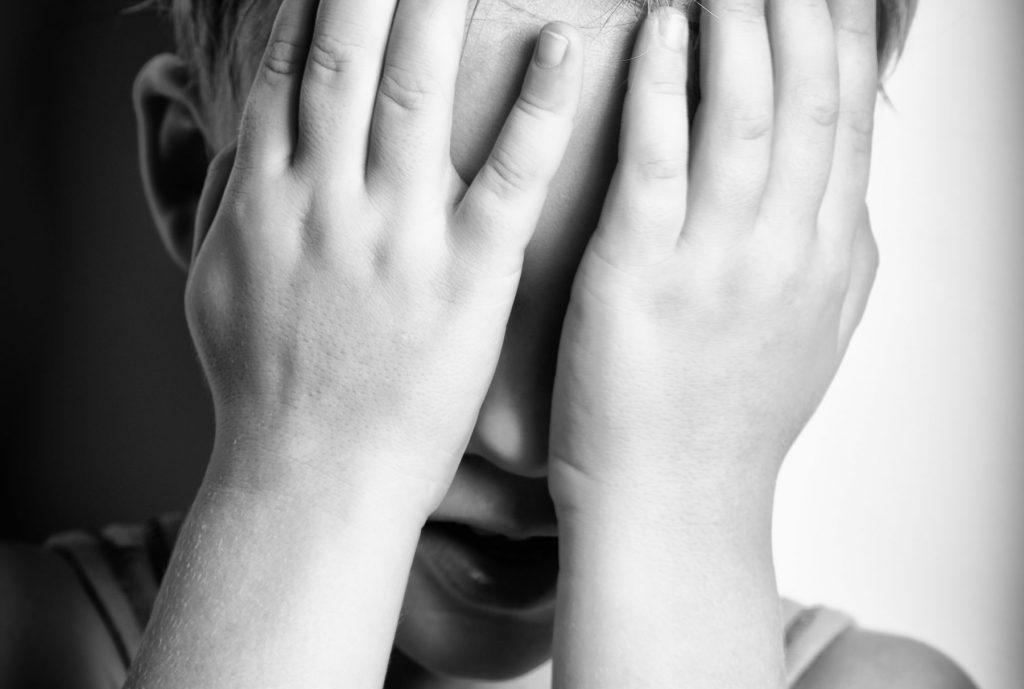Domestic Violence: Beyond the Headlines
As Domestic Violence Awareness month comes to a close, SPCC therapist Crystal Foster, M.S. reflects on her work with children and families impacted by Intimate Partner Violence, reminding us that there is a “rest of the story” beyond the headlines we read.
 The dichotomy between good and evil is a familiar theme, stemming from childhood stories to current articles in the news. It’s usually very easy to identify the hero and the villain of the story. They are differentiated by their actions and their intent. It is comforting to think that we can make these distinctions with confidence, but the truth is, sometimes it’s not that simple.
The dichotomy between good and evil is a familiar theme, stemming from childhood stories to current articles in the news. It’s usually very easy to identify the hero and the villain of the story. They are differentiated by their actions and their intent. It is comforting to think that we can make these distinctions with confidence, but the truth is, sometimes it’s not that simple.
Cases of intimate partner violence make headlines daily. The report usually makes a cut and dry identification, labeling one person the victim and the other the batterer. Often there are very few details reported on, aside from the charges and the facts gathered from a police report. Sometimes the article may mention that children were present, and if they were or were not physically harmed. Many times, there are a lot of unanswered questions after reading such an article. Sometimes this is for the protection of those who were involved. We may see a follow up in the news regarding if the identified batterer was found guilty of the charges, but most times we don’t. We may never know what happens beyond the headlines, but the story does go on.
I’ve had the privilege of working at SPCC in two of our programs, the Supervised Visitation and Exchange program (SVP) and the Family Trauma Intervention Program (FTIP). In both programs, we work with the family as a whole, but both are child-focused programs. In SVP, I worked as a Visitation Specialist for our traditional visitation program, as well as for our Therapeutic Visitation Program. I primarily worked to provide access and visitation for families in high conflict custody cases. Some of these families did have a history of intimate partner violence between the parents. Many people are surprised to learn that the person identified as the batterer may still have the right to visitation or custody of a child, in spite of what the headlines may have said. At SVP, we provide a neutral, safe environment for visitation or exchanges to occur.
Children who are survivors of domestic violence have many different reactions to visiting their parent. At times, if you look closely, you may see the child trying to work through their conflicting views, wondering things like: “In this moment, are they my parent the hero or my parent the villain?” Some days they may feel excited to see their parent, and some days they may feel afraid. They may feel caught in the middle between their victim parent and the batterer, as many children do when parents don’t agree. As visitation staff, we walk along side the child, sometimes figuratively, and sometimes literally, as they navigate these feelings.
In the FTIP program, I currently work as a therapist for children of all ages. It can be hard to understand how a child may be impacted by domestic violence. A news article may report that the child was not in the room when the incident occurred, or maybe wasn’t even home. It may say that the child was an infant or toddler, and this may lead a person to think that they couldn’t possibly have any understanding of what happened. After all, they may not have seen anything, and it’s hard to say what a child that young can remember. At SPCC, we see how children are significantly impacted by domestic violence no matter how close, how far, how young or how old they may be. Children may not have the words to tell people what they have experienced, but we see it in their behaviors. One of the treatment modalities used by FTIP to work with children is Play Therapy. This is a way to use a language that the children are fluent in, play, as a means of allowing the children to communicate their thoughts and feelings about what they have experienced; as well as to work towards trauma resolution.
When a family is impacted by domestic violence, children often experience a multitude of changes and respond in different ways. They may end up in a living situation where nothing and no one is familiar. They may be separated from one, or both parents, as well as their siblings. They may end up under the care of a family member or family friend. Maybe they have to change neighborhoods or schools. They may miss how it was when both parents lived under one roof. Even though sometimes it was scary, at least it was familiar. Maybe they think about the good days. And maybe they wonder how someone they love so much could do things that are so hurtful. And they can’t explain how they can be so happy and so sad at the same time. Some may lash out and become physically violent towards others, while some may withdraw and keep everything inside.
This is where we at SPCC come in. This is the stuff that doesn’t make the headlines.




